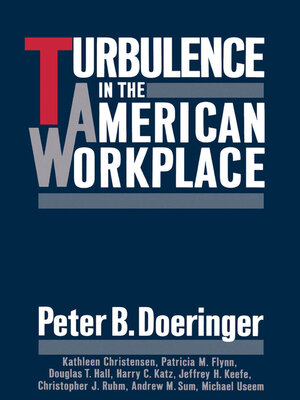
Sign up to save your library
With an OverDrive account, you can save your favorite libraries for at-a-glance information about availability. Find out more about OverDrive accounts.
Find this title in Libby, the library reading app by OverDrive.



Search for a digital library with this title
Title found at these libraries:
| Loading... |
Turbulence—rapid and sometimes tumultuous changes—has characterized the labor markets of the 1970's and 1980's. Turbulent competitive conditions have cut sharply into profits and have forced downsizings and radical readjustments in America's workplaces. Workplace turbulence has resulted in lost jobs, declining incomes, and falling productivity for American labor. From the perspectives of business and labor, turbulence and its consequences is the key human resources issue for the last part of the twentieth century. In Turbulence in the American Workplace, a distinguished group of experts forcefully and convincingly argue that the human resources capacity of the private sector is the first line of defense against turbulence and is of equal importance to public sector education and training programs. The authors—including Kathleen Christensen, Patricia M. Flynn, Douglas T. Hall, Harry C. Katz, Jeffrey H. Keefe, Christopher J. Ruhm, Andrew M. Sum, and Michael Useem—effectively demonstrate how global competition, deregulation, and technological change are creating hard choices for employers that will alter both the living standards of workers and the performance of American industry in the coming decades. This illuminating work will be of significant value to business school faculty, corporate strategic planners, and general managers, as well as students and professionals interested in the areas of public policy, industrial relations, education, and labor studies.






